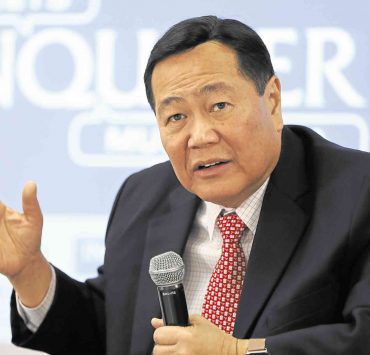Will you make this leadership mistake in 2024?

Journalists, board members and business owners around the world often ask me, “Tom, based on your work with business leaders around the globe, whether they be Fortune 500 CEOs, business owners, or even billionaires, what is the No.1 thing that makes business leaders successful?” This is the wrong question. They should ask, “What is the No. 1 thing that can risk their success, that leads them to fail? What is the No. 1 thing that can even cause entire business empires to come crashing down?”
Lack of self-knowledge
The No. 1 thing that will cause a business to fail, if it’s a startup or already a multi-billion empire, is lack of self-knowledge of the person at the top. The one who rules. No matter what his or her title is, I mean the person that ultimately makes the most strategic decisions for the business.
If you are the person at the top or want to be that person, you need to have ruthless and clear awareness of what your key strengths and weaknesses are. Otherwise you are doomed to fail.
Consider the example of Cho (name changed), an Asian super-entrepreneur who sold all businesses he had to start a new conglomerate centered around making the world a better place, and making it sustainable. He started a new business almost every month and was buying properties for business expansion without anyone to put him in place, without any checks and balances. Especially in many Asian countries, once you combine the ingredients of power, status, wealth and business ownership, almost no one will tell you the truth.
Blindspots that will kill you
And so no one did. Everybody around him was along for the ride, including the chief financial officer—because they were all getting paid. But behind closed doors, they were openly talking about being on the Titanic, a sinking ship headed for bankruptcy. Why? Because the guy was spending like crazy, had no strength in business strategy, and was following every Monday morning inspiration that came to him—with utter disregard for viability, costs or return on investment. When I sat down with his team, all the top people openly told me what they thought. But not to him.
What would he need? An honest look at himself so he surrounds himself with people who are very good in the areas where he is weak. Ultimately, he was not open to stare reality in the face, so we declined to work with him and turned his request to advise him and his conglomerate away. You cannot pour tea in a cup that’s already full.
As a leader, you need to do whatever you can to have 100 percent clarity about what you are good at, who you are as a person, and what your weaknesses are. Otherwise these blind spots will kill your business, and you along with it.
The counterbalancing force
Take Peter and Mary (names changed), for example, an American power couple. He just won an EY entrepreneur award; they are both thriving in their partnership to take their startup to the next level. They applied and entered our high-potential startup program. We only accept five per year, no matter how many apply, because we dedicate the majority of our time to our other clients who own large businesses or conglomerates.
Peter is the gung-ho, overzealous entrepreneur who is excellent at inspiring others to rally around his vision. A great people person and a no-holds-barred, anything- is-possible doer. Mary is more restrained, more analytical, sees the risks where Peter sees barely any. I explained to them both when we were coaching them that she is his counterbalancing force, a necessary and very important part in the whole equation of their entrepreneurial success.
They balance each other out. They complement their views. And together they can see reality a lot more clearly. Otherwise, he would be flying half blind. In order to make the best strategic decisions as a leader, you must see reality as clearly as possible.
The turnaround
Another one of our clients is a US-based multi-award winning second-generation family business conglomerate that is highly profitable. They got us on board to future-proof and pivot their business because the owners were wise enough to see that the music in their core business may soon start to slow down.
We advised the owner, who is also the president, to get a person next to him who has a very different character, much more rational, detached and analytical. This is to balance the owner’s tendency to start too many new projects without thinking things through, and without taking into account that his business—like all others—has limitations: time, resources, people, etc.
After we interviewed a number of candidates and selected the best one, he kept that person close. The result? After a few months, the first quick wins already started to show: one of the businesses that had given the owner the most headache already managed to make a turnaround and achieve the highest profitability in years.
In case you don’t have a person like that around, or it would take too long to find one, already start with having neutral external advisers tell you what you are missing. They will not be limited by company politics or sugarcoating.
Famous failures
Elizabeth Holmes of Theranos rose to fame with her bold claims of revolutionizing the blood-testing industry. However, her lack of expertise in medical science and the absence of a counterbalancing force in this area led to the company’s dramatic downfall. Holmes’ inability to complement her entrepreneurial spirit with sound scientific advice and ethical business practices illustrates the critical need for balanced leadership.
Similarly, the collapse of Blockbuster under the leadership of John Antioco can be attributed to a failure to adapt to the digital revolution. Despite Antioco’s success in expanding the footprint of Blockbuster, his lack of foresight and resistance to emerging online streaming technologies—areas where a tech-savvy counterbalance could have provided crucial insight—resulted in eventual bankruptcy.
Success stories of effective counterbalancing
Conversely, the annals of business history are also filled with stories of leaders who thrived by embracing the principle of counterbalance. Steve Jobs, the visionary behind Apple, is a prime example. Jobs’ unparalleled creativity and forward thinking were perfectly complemented by Tim Cook’s operational expertise and meticulous attention to detail. Cook’s proficiency in areas where Jobs was less focused, such as supply chain management, allowed Apple to innovate while maintaining efficiency and profitability.
Another illustrative example is the partnership between Bill Gates and Paul Allen, the cofounders of Microsoft. Gates’ programming genius and business acumen were well matched with Allen’s technical foresight and strategic thinking. Allen’s ability to foresee the importance of software over hardware in the early days of computing provided the necessary counterbalance to Gates’ focus, leading to the dominance of Microsoft in the software industry.
Tom Oliver, a “global management guru” (Bloomberg), is the chair of The Tom Oliver Group, the trusted advisor and counselor to many of the world’s most influential family businesses, medium-sized enterprises, market leaders and global conglomerates. For more information and inquiries: www.TomOliverGroup.com or email Tom.Oliver@inquirer.com.ph.
Tom Oliver, a “global management guru” (Bloomberg), is the chair of The Tom Oliver Group, the trusted advisor and counselor to many of the world’s most influential family businesses, medium-sized enterprises, market leaders and global conglomerates. For more information and inquiries: www.TomOliverGroup.com or email Tom.Oliver@inquirer.com.ph.
















